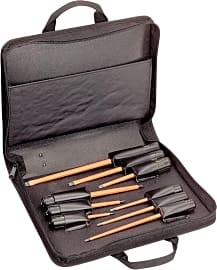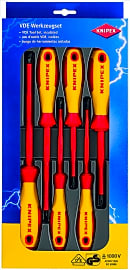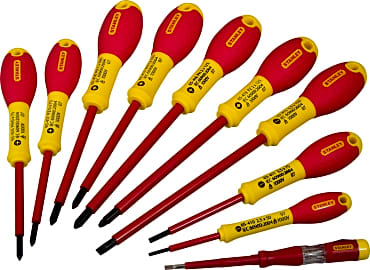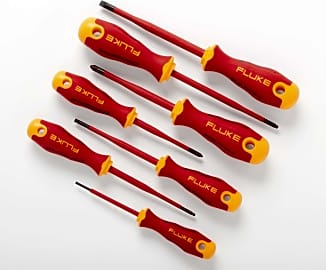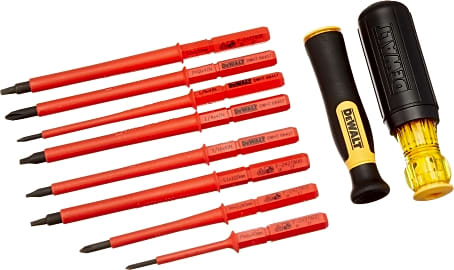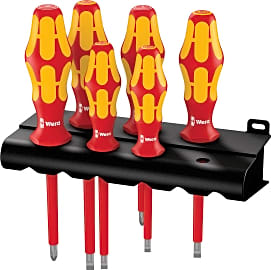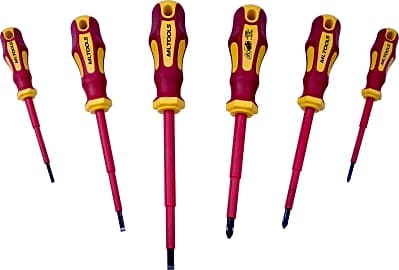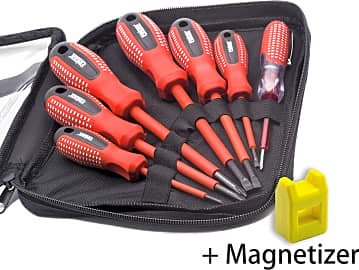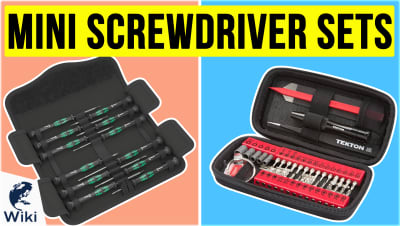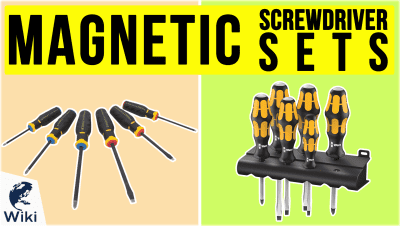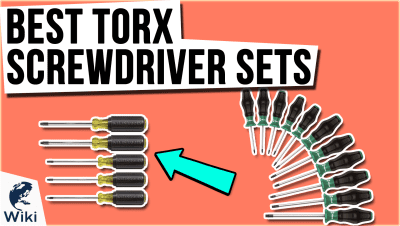The 10 Best Insulated Screwdriver Sets

This wiki has been updated 37 times since it was first published in December of 2016. Because of the frequent, close proximity to live power, electricians have one of the most dangerous jobs in the construction industry. For this reason, insulated hand tools, like these screwdriver sets, have long since been a mainstay for prudent professionals, providing protection against up to 1,000 volts AC. Just be sure to verify their voltage ratings, styles and sizes before you order. When users buy our independently chosen editorial recommendations, we may earn commissions to help fund the Wiki.
Editor's Notes
November 18, 2020:
It was a fairly straightforward round of updates, as all of our previous picks still proved to be good choices. We did, however, still manage to find a few places to brush up on things. The two-piece Klein Tools 33532INS, for example, was replaced by the Klein Tools 33528 — a nine-piece kit that comes in a cushioned, zippered storage case. We also decided on eliminating the Titan Tools 17237 and the Miwaukee 48-22-2202, in order to make room for the Knipex 00 20 12 V01 and Fluke IKSC7 — six- and seven-piece offerings from top companies in the insulated-hand-tool space that weren’t currently seeing any representation on our list.
While insulated hand tools are a great first step to take, when it comes to protecting yourself while doing electrical work, they aren’t a panacea when it comes to ridding yourself of the risk of electrocution. Electrical work, and especially live-power work, is dangerous at the best of times, and we strongly recommend against it if you’re not a qualified professional. Before attempting any electrical work, do you due diligence and find out whether your local bylaws make it permissible, and, even if so, make sure you’ve done your research, have become well familiar with the process you’re attempting and are observing all best-practice safety procedures.
The vast majority of the options we’ve ranked here today are rated to protect you from 1,000 volts AC or 1,500 volts DC. One exception is the 500-volt-rated Finder Magnetic Tip FBA_FD-ISD-7PC-RED, which still offers plenty of protection for common residential applications. It should also be noted that Finder’s three-piece kit apparently provides protection up to 1,000 volts, so you shouldn’t necessarily rush to write the company off if a 1,000-volt designation is a must for you.
June 03, 2019:
Insulated screwdrivers have non-conductive plastic covers that protect you from harmful shocks when you’re doing electrical work. In addition to keeping you safe, these tools also can protect against damage to delicate parts of a device that could be destroyed by an electrical short.
Joining the mix in this update is the Stanley 562573 FatMax, which you won’t miss in your tool bag or around your workbench, thanks to their cheery red and yellow colors. Their large-diameter handles help you to achieve the high torque levels needed to drive screws made of wood. Each features a chrome vanadium steel bar, which helps achieve high torque and lowers the chance of the tips breaking. The handles are molded directly to the bars for a bond that’s virtually unbreakable.
For a selection that can be hung easily from a tool belt or on a wall, look to the Milwaukee 48-22-2202, which have hanging holes on their ends. You’ll have no problem determining which is which, thanks to their clearly labeled handles. They feature a red layer of insulation on top, and a yellow one underneath – so you’ll be able to tell if any of them has sustained any damage and is need of replacement.
The dependable DeWalt DWHT66417 can be counted on to fit the most common sizes of flat-head and Phillips screws, and the quick-release design allows for simple, secure blade changes. Included is a durable black pouch to keep everything stored in one place. They’re backed by DeWalt’s lifetime warranty that covers materials and workmanship.
Insulated Versus Non-Insulated Screwdrivers
A non-insulated screwdriver may have multiple colors on its handle, but this is more often than not an aesthetic feature, not one designed with shock-prevention in mind.
Most people are familiar with screwdrivers and have probably needed them around the house now and then. The insulated screwdriver is a more specialized tool, one commonly used by those involved in DIY electrical work, and computer repair. In fact, professional electricians may be required, by either the law or the company they work for, to choose the insulated version of this tool. The reasons for choosing such a tool, however, might not be as simple as one would imagine.
Certainly, it’s easy to see that an insulated screwdriver is made to protect the user from an electric shock or an arc flash, as there is less exposed metal than you see in a regular screwdriver. But many tools have plastic or rubber handles, leading people to wonder why they need the insulated model, when it appears that a regular version already offers protection. The answer is that the handle and shaft of an insulated screwdriver are usually covered with layers of both rubber and plastic, which enhances their dielectric properties. Most, if not all, are made to withstand up to 1,000 volts (AC), and high-quality insulated screwdrivers will meet the standards set forth by a respected testing body like the American Society for Testing and Materials International or the International Electrotechnical Commission.
And, often, the pieces in an insulated screwdriver set look different, too. The rubber and plastic comprising their coatings usually feature two colors so that any wear can be detected quickly and easily. If you can see one layer through another, whether because of continued use or damage, you know that it’s time for a replacement. A non-insulated screwdriver may have multiple colors on its handle, but this is more often than not an aesthetic feature, not one designed with shock-prevention in mind. You’ll also see that most insulated screwdrivers have markings somewhere on the body that inform the user either what voltage they’re rated for or to which standards they conform.
Do It Yourself?
Sometimes those who are new to electrical or tech work want to know why they can’t make their own set of insulated screwdrivers. For instance, why can’t you just wrap electrical tape around a regular screwdriver and call it a day? After all, doing so might save you some cash, especially since the odds are good that if you’re asking this question, you probably already have both tape and screwdrivers at home. You don’t want to attempt to fashion your own insulated tools for a couple of reasons, though.
Consider, too, that tape is not as strong as rubber and plastic; one accidental slice with a sharp object, and your insulating abilities are compromised.
For one thing, you have no real way of knowing that your tape application is uniform and effective. The standards laid out by bodies like the ASTM, on the other hand, ensure that the tools made to these specifications are safe up to a high range of tolerances. In fact, under the ASTM standard, insulated tools are tested up to 10,000 volts, even though they only receive the 1,000-volt rating. Consider, too, that tape is not as strong as rubber and plastic; one accidental slice with a sharp object, and your insulating abilities are compromised.
“But,” you may be thinking, “I’m more careful than most people, and anyway what is the likelihood that anything will really happen to me?” Well, it may not, but is it worth it to find out? Besides which, humans are notoriously bad at accurately assessing risk, a cognitive quirk that’s referred to as the optimism bias. In other words, due to a range of factors, most people believe that it’s less likely that a perceived negative outcome will happen to them than it will to others. The consequence of this common way of thinking is that people do not take proper safety measures, thus leaving themselves open to preventable hazards.
It’s also worth noting that even after you invest in your safety with the proper insulated tools, you should avoid taking unnecessary risks or working on a live circuit, especially if you aren’t a professional.
Organizational Strategies
If you’re anything like most people, you started out buying non-insulated tools, then perhaps you became more serious at your chosen work, so you invested in some insulated implements, from screwdrivers to wrenches, and boom — you’ve got tools everywhere that need storing. Organizing your tools may not seem all that bad if you bought them all in sets with cases, but for most folks who use tools regularly, their collections extend far beyond this. You can buy a toolbox, of course, but we’ve got a few extra ideas for those of you who need more space and order.
A tie rack or belt holder, for example, could hold cords or smaller items with hanging loops.
One thing to do is think about the organizational items you use in your home and how you can repurpose them. A tie rack or belt holder, for example, could hold cords or smaller items with hanging loops. An old dish strainer could hold circular saw plates, while a magnetic spice rack will keep your tiny screws, bolts, and nails sorted and visible.
Pegboard is another item you’ll often see in tool storage solutions, but with a little creativity, you can expand the number of ways you hang your stuff from it. You might try cutting pie plates in half and screwing them to the board to hold flat, circular items. Or, use a dowel to hold your tape neatly in a row. Carabiners, binder clips, and magnets all make excellent choices for hanging items, and they’re often more secure than hooks alone. And if pegboard isn’t your thing, try insulation foam instead.
You may also be surprised by how many items that you throw out could instead make great organizational aids. Plastic gallon milk or water jugs make excellent storage bins that are fairly roomy. You’ll just need to cut off the top spout and the handle to make some extra space for getting your insulated screwdrivers, hammers, or what-have-you in and out of the top. Plastic coffee creamer containers, pasta jars, and yogurt cartons are all great for loose odds and ends, and the cardboard tubes from paper towels and toilet paper are excellent for constraining cables.


